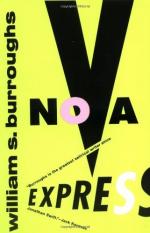|
This section contains 547 words (approx. 2 pages at 300 words per page) |

|
Although Burroughs himself had reservations about the success of the Space Age trilogy, mentioning a number of times that he did not feel that its technical experiments were fully effective, he was initially very excited about the possibilities of what he called the "cut-up" or "fold-in" method of composition. When he became friends with the Swiss artist Brion Gysin in Tangier, he was struck by Gysin's cutting and rearranging of newspaper clippings and other printed matter to form collages. Burroughs saw this as a way to fracture familiar patterns of responding to words and called it, with his wry wit, "a project for disastrous success."
Always an avid reader, Burroughs realized that such modernist works as T. S. Eliot's The Waste Land (1922) and John Dos Passos's U.S.A (1938) were employing this technique, and that the visual artists who interested him, especially the Dada master Tristan Tzara, had...
|
This section contains 547 words (approx. 2 pages at 300 words per page) |

|




